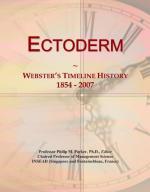|
This section contains 244 words (approx. 1 page at 300 words per page) |
Cell division of a fertilized egg results in the formation of a population of presumably equivalent cells. The initially large egg is cleaved into smaller embryonic cells. Cleavage is followed by gastrulation. Gastrulation is the beginning of the process of cell specialization. Gastrulation is an extraordinarily critical stage in development because the cells of the former blastula are rearranged by folding and cell migration to construct an embryo of three layers. The outer cell layer of an amphibian gastrula and the superficial cell layer of a bird, reptile and mammalian primitive streak stage is referred to as ectoderm. Ectoderm, and the other cell layers, known as mesoderm and endoderm, comprise the three primary germ layers of vertebrate embryos.
Embryonic ectoderm differentiates into a diversity of adult cells, tissues and organs. These include the integument, the nervous system, and external sense organs. The ectodermal integument derivatives consist of epidermis, nails, hair, tooth enamel, and glands associated with the skin, such as the mammary, sweat and sebaceous glands. The ectodermal central nervous system is comprised of the brain and spinal cord. Ectoderm also gives rise to spinal nerves, cranial nerves, the autonomic nervous system, and the adrenal medulla. The nervous system contains neurons which are the essential conducting cells. The neurons are supported and maintained by ectodermal neuroglia cells. External sense organs of ectodermal origin include the nose, eyes, and ears. The mucous membranes of the oral cavity and anus are ectodermal in origin.
|
This section contains 244 words (approx. 1 page at 300 words per page) |


